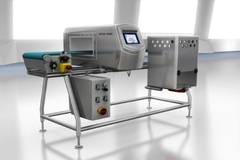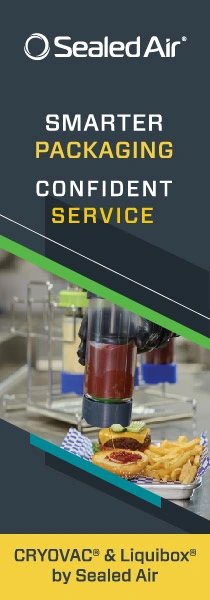Eradicating Irregular Metal Fragments From Your Food Production Line
In recent years a number of food manufacturers have had to recall their products due to metal contamination, garnering strong, global media coverage and damaging their reputations.
One major cause is that modern food and pharmaceutical production lines are making extensive use of automated, high-speed processing systems to increase their productivity so that they can meet growing demand for products, such as ready meals. However, this rise in the use of processing machinery can lead to an increased risk of contamination from metal. Manufacturers in both industries need be able to trust the processing systems and the product inspection technology on their production lines to protect their businesses and their brands from the cost and damage of product recalls.
Typically, the greatest metal contaminant risk to food production lines comes from irregularly shaped fragments such as wire, slivers of metal and “swarf”, also known as filings, caused by broken processing machinery or bodies that have entered the production line with the raw ingredients. These irregularly shaped contaminants can be difficult to detect using conventional inspection systems, especially when the size of the foreign body is very small.
Non-spherical metals such as wire can be detected more easily when passing perpendicularly to the detector search head than when passing lengthways, a phenomenon known as the “orientation effect”. This is due to the wire possessing a larger profile in one orientation than the other, increasing the likelihood that the detector will identify the electrical current induced in the metal. However, typical metal contaminant test cards used to determine that the detector is working at optimum efficiency contain spherical samples, which would possess no orientation effect.
One effective solution to overcome the orientation effect is to use two or three metal detector search heads in series on the production line, all of which can be set at different angles to the conveyor. As a result, the orientation of the contaminant relative to each detector changes, maximising the likelihood of detection. The metal detectors’ maximum level of sensitivity needs to be such that it can detect a foreign body’s width at its narrowest point to ensure it can be safely removed from the production process.
In addition, manufacturers can improve the likelihood of contaminant detection by carefully considering where to best install the metal detector according to the results of a Hazard Analysis and Critical Control Point (HACCP) audit, the detection frequency range of the metal detector and also the size of the aperture to be used. In many cases, manufacturers may know the size of contaminant they are trying to detect. For example, in the pharmaceutical industry, the greatest contamination risk comes from broken sieve wires. As manufacturers are aware of the diameter of the wire used in the sieves on their production lines, they can specify a minimum level of metal detector sensitivity to the product inspection system supplier when commissioning a new detection system. The new metal detector can then be tested by the supplier’s research and development (R&D) team to ensure it is capable of identifying the specific sieve wire type even in its most challenging orientation.
No matter what the cause, product recall announcements can significantly harm a brand’s reputation and erode profits. To avoid this, manufacturers must ensure their inspection systems are capable of identifying irregularly and regular shaped contaminants.
Source: Mettler Toledo












